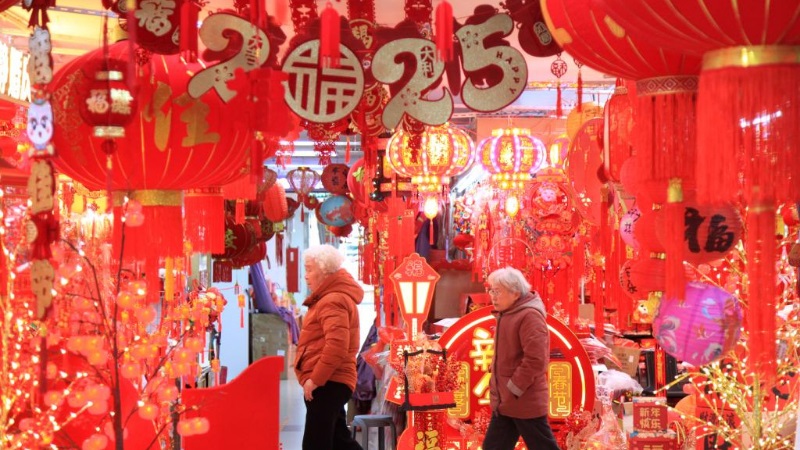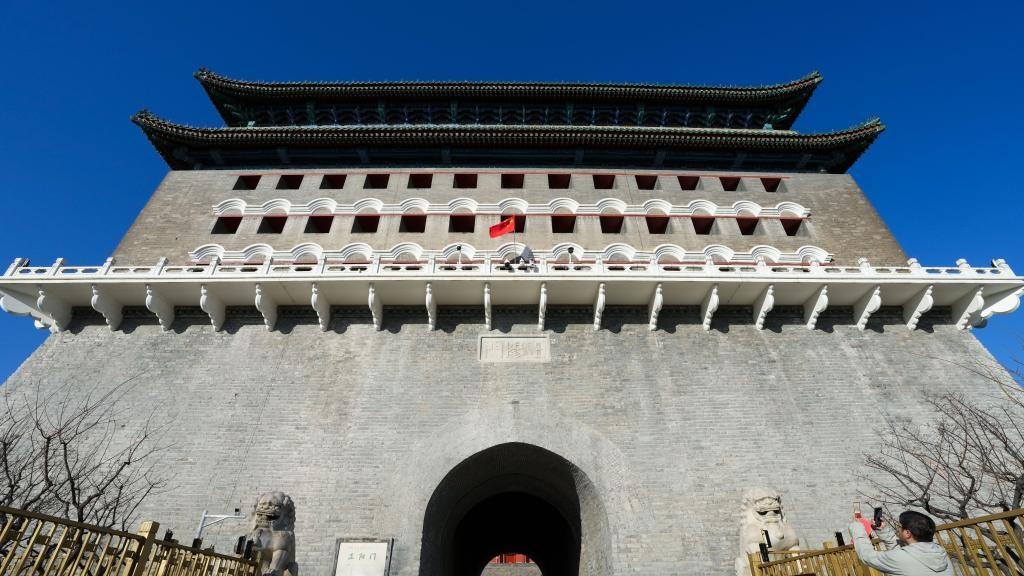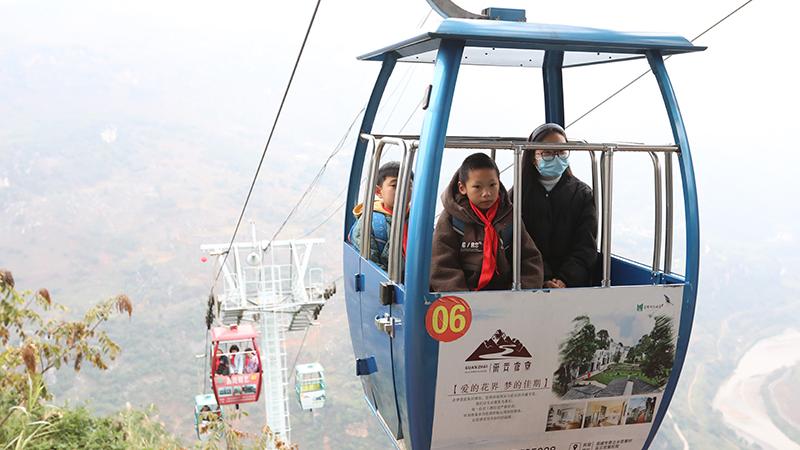China-Laos railway serves as vital link
In early winter, as beans at the coffee plantations in Simao district of Pu'er city begin to ripen, tourists flock to experience the entire process — from harvesting to roasting, grinding, hand brewing, and tasting. Across the city, businesses integrating coffee and tourism add punch to the local economy.
Dai Xiaoyan, general manager of a coffee estate, said that during the National Day holiday in October, the daily number of visitors to her operation hit 1,000. While sampling the local coffee culture, tourists also enjoy Yunnan's ethnic specialties, such as wood carvings and Wa ethnic group brocades. The booming coffee industry is also driving the development of dining and accommodation.
By the end of October, it was picking season for Pu'er tea. Hou Jianrong, head of a local tea estate, said that though tourism also integrates with tea selling, about half his company's sales rely on long-term repeat consumption.
Coffee and tea have become significant tools for Pu'er in driving rural vitalization, increasing income for the local people, and promoting culture and tourism. In the first half of 2024, the city's raw tea production reached 74,700 metric tons, a year-on-year increase of 5.65 percent. Raw coffee bean production hit 58,000 tons, a year-on-year increase of 26.44 percent.
On Dec 3, 2021, a 1,035-kilometer railway linking Kunming, Yunnan's capital city, to Vientiane, capital of Laos, officially commenced operations. Known as the China-Laos Railway, it is a vital cog in the economic revitalization of Pu'er. It now takes just around two hours to travel from Pu'er to Kunming, while traveling from Simao district of Pu'er to Xishuangbanna, a typical Yunnan tourism destination, takes just 40 minutes.
The China-Laos Railway has brought new opportunities for the integrated development of coffee and tourism in Simao district, where business owners are creating modern boutique coffee estates that offer a one-stop experience from seed to cup. During this year's National Day holiday, Pu'er welcomed 1.82 million tourists over the seven-day break — a 9.34 percent increase compared to 2023. "Many tourists travel to Simao via the China-Laos Railway, bringing a wealth of market information and orders," said Yang Hongjian, owner of a local coffee plantation. "The China-Laos Railway has shortened the distance between Simao district and other parts of China, as well as countries in South and Southeast Asia."
While driving the development of the tourism industry in Pu'er, the two pillar industries of tea and coffee are also using the railway to enter domestic and international markets more efficiently.
Coffee growers in Simao are planning ahead to understand information such as tariffs and import and export regulations in a bid to open businesses in Laos and Myanmar. At the Yunnan Jinkelong Coffee Industry processing line in Simao district, local products are continuously graded and packaged, to be shipped nationwide and to South and Southeast Asia via the China-Laos Railway.
"Jinkelong's establishment is due to the raw material advantages of Pu'er coffee's place of origin being along the China-Laos Railway, which is convenient for importing raw materials and exporting products," said Shi Huazhong, the company's deputy-general manager.
As a flagship project under the framework of the Belt and Road Initiative, the China-Laos Railway is becoming a typical case of driving mutual benefit and win-win cooperation among countries, providing impetus for the economic development of China and Laos.
Over the past three years, Pu'er's foreign trade structure has continued to optimize thanks to the railway. From January to October 2024, the import and export value reached 6.2 billion yuan ($850.5 million). In 2024, coffee and yeast exports have increased by 390.3 and 327.1 percent respectively, compared to 2023.
Since the opening of the China-Laos Railway, a large number of investment opportunities and technological cooperation opportunities have been pouring into Simao district, injecting momentum into the economic and social development of the region.
"We are seizing the historic opportunity of the China-Laos Railway to accelerate the domestic and foreign industrial upgrades as well as enriching investment projects along the railway. Focusing on advantageous industries such as tea, coffee, biomedicine, cultural tourism and health preservation, and commerce and logistics, we are introducing representative projects to drive more capital and talent to invest and start businesses in Simao," said an official from the investment promotion bureau of the district.
Photos
Related Stories
- China-Laos Railway boosts growth of regional trade, tourism
- China boosts international logistics with launch of Chongqing-Vientiane rail-road freight service
- Chinese, Lao political parties hold 12th theory seminar in Xi'an
- Chinese foundation donates bicycles to Lao students
- China-Laos Railway facilitates 43 million passenger trips in 3 years, acting as a new engine for regional economic development
Copyright © 2025 People's Daily Online. All Rights Reserved.









